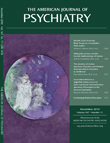Clinical Manual of Emergency Psychiatry
The psychiatric emergency department is one of the most acute and challenging settings in clinical psychiatry. Patients present with a wide array of mental health and often comorbid medical complaints; timely and accurate assessment not only takes considerable skill but also may have life-and-death consequences. Psychiatric emergency departments are also often essential training sites for residents and medical students, where a learning and teaching setting presents a unique set of challenges given the acuity of the setting. This book provides a practical approach to psychiatric emergency evaluation and treatment, with a special focus on the unique challenges of education in such a demanding setting. It will certainly be of significant use to trainees and more seasoned clinicians alike.
The book is divided into chapters that center around chief complaint or clinical situations rather than psychiatric diagnosis. This unique organization allows the reader to think through a differential diagnosis based on presenting symptoms and makes it a very practical guide to which to refer while evaluating a patient. This is particularly pertinent in the emergency setting where patients often present without a predetermined diagnosis and where many disorders share similar presenting symptoms. The addition of case vignettes contextualizes each scenario, makes the chapters come alive, and helps drive the clinical points home. Another unique feature is that each chapter is cowritten by a trainee and a seasoned clinician; this allows for an integrated perspective and broadens the potential audience of readers. Finally, at the end of each chapter the Key Clinical Points provide a clear and concise synopsis of the main themes discussed and are a useful quick reference.
The book also focuses on topics not often discussed in other clinical manuals. The two chapters on supervision and teaching are perfect examples of this and not only describe the importance of a thoughtful and adaptive teaching style in such a complex setting but also outline specific teaching models that may be used. The section on troubleshooting feedback is particularly welcome, as is the helpful differentiation between the learning needs of residents versus medical students. Chapters on legal and ethical issues, restraint and seclusion, and disposition options round out some of the unique offerings of this clinical manual.
In summary, the Clinical Manual of Emergency Psychiatry provides a clear and concise discussion of clinical topics particular to the psychiatric emergency setting that is interesting to read, practical, and useful. It is a helpful guide to address the complexity of differential diagnosis, treatment, and disposition options for trainees as well as more senior staff. The focus on teaching and supervision will be helpful in both academic and nonacademic settings and makes this book appealing and useful for a broad audience of readers.



